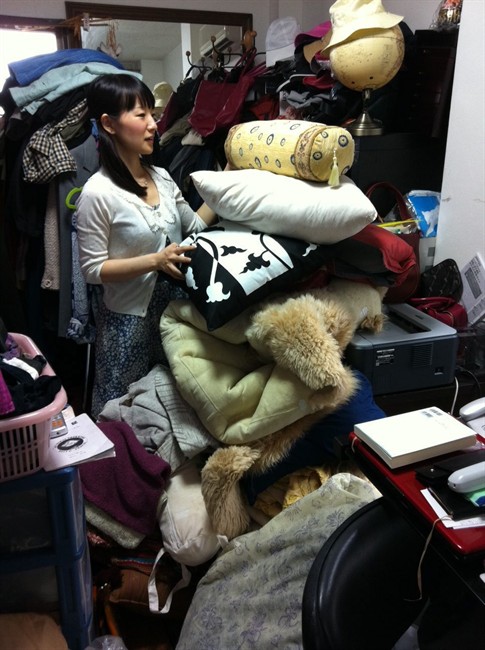For empty nesters, seniors and others who find themselves moving into a smaller space, downsizing can feel emotionally and physically overwhelming. But careful planning and perspective can make it easier.

It helps to keep your eyes on the prize, experts say. Envision how great it will feel to be unburdened by excess and achieve your goal of living happily with less, in a smaller but comfortable space, says Stephanie Sisco, home editor for Real Simple Magazine.
For seniors, it helps to think of the process as a way to put things in order now so the burden of sorting through everything doesn’t fall to your family later.
For families, downsizing is a great chance to teach kids organizational skills, she says.
“Kids might not be able to help much in the garage or kitchen, but they are experts on their own toys, and know which things they care about and which can go,” Sisco says.
Five suggestions to make downsizing easier:
1. Don’t guess. Calculate.
Measure your new space to determine exactly what will fit (and what won’t), and precisely where each piece of furniture should go. Draw a floor chart onto graph paper so that each square represents a foot, with furniture pieces cut out from Post-Its and placed appropriately on the grid. Or use one of many available apps that accomplish the same task, generally in greater detail.
“I use the Sweet Home 3-D app, but there are many other apps out there,” says Diana Zagariello, owner and director of Caring Transitions of Long Island, based in Merrick, New York. Caring Transitions, which helps seniors downsize, has 170 offices across the country.

Get daily National news
“It’s important to know exactly what will go where so you can make the most of the muscle available to you on moving day and aren’t stuck rearranging heavy furniture in a small space after the movers have gone home,” she says.
When helping seniors move, she says, get them and everything they’ll be taking with them moved into the new space first. Going through the rest of their things can be too physically and emotionally overwhelming for many seniors, and is often more efficiently accomplished once they have moved out.
2. Prepare, prepare, prepare
Start paring down by making a list of everything you don’t love or need so that you can start selling or giving it away. Add to your list as you sift through your things, Sisco says.
Identify appropriate charities.
“Before you start a big purge, it’s good to know where you want to donate your items like books, clothes and furniture. Do a little research, and that way you have a plan to quickly get rid of things as you go,” says Sisco.
Make sure you have plenty of boxes, Sharpies, zippered plastic bags and other materials for quickly packing. Once you get going, you won’t want to lose momentum because you don’t have enough of the right boxes, she says.
In addition, says Zagariello, “Make a nice long list of who to contact about your change of address, what services need to be disconnected or transferred, where you want to donate things or to whom you want to give them. Everything.”
3. Take on your belongings
Begin the process of discarding your possessions by tackling the least sentimental first, so you don’t get bogged down, says Sisco. Start with the laundry room or pantry, for instance, and work your way up to things like photos or mementos, the toughest things to get rid of.
As bestselling author Marie Kondo writes in the “The Life-Changing Magic of Tidying Up” (Ten Speed Press, 2014), it helps to tackle things methodically, keeping only what you truly love or need.
4. Enlist help and remember to breathe
“It really helps having someone by your side, helping you stay focused,” Sisco says. It could be someone from a moving company, a professional re-locator, a friend, a neighbour or family member, Sisco says.
It’s important to have support making the many decisions that come up before, during and after a move.
Give yourself a 5- or 10-minute break every 45 minutes or so, Sisco says.
And if it’s all too much, hire a relocating expert to do part or all of the job. In many cases, estate sales can help cover the cost of their services.
5. Make it quick
Resettle as quickly as possible to keep your new, smaller home from feeling cluttered.
“You want to get all the boxes unpacked and out the door, and everything in place in a matter of days. Otherwise boxes can linger unpacked for far too long,” Zagariello says. “If you’ve done things right in the planning stages, the resettling part should be pretty quick and easy, and the quicker you finish up the better.”







Comments